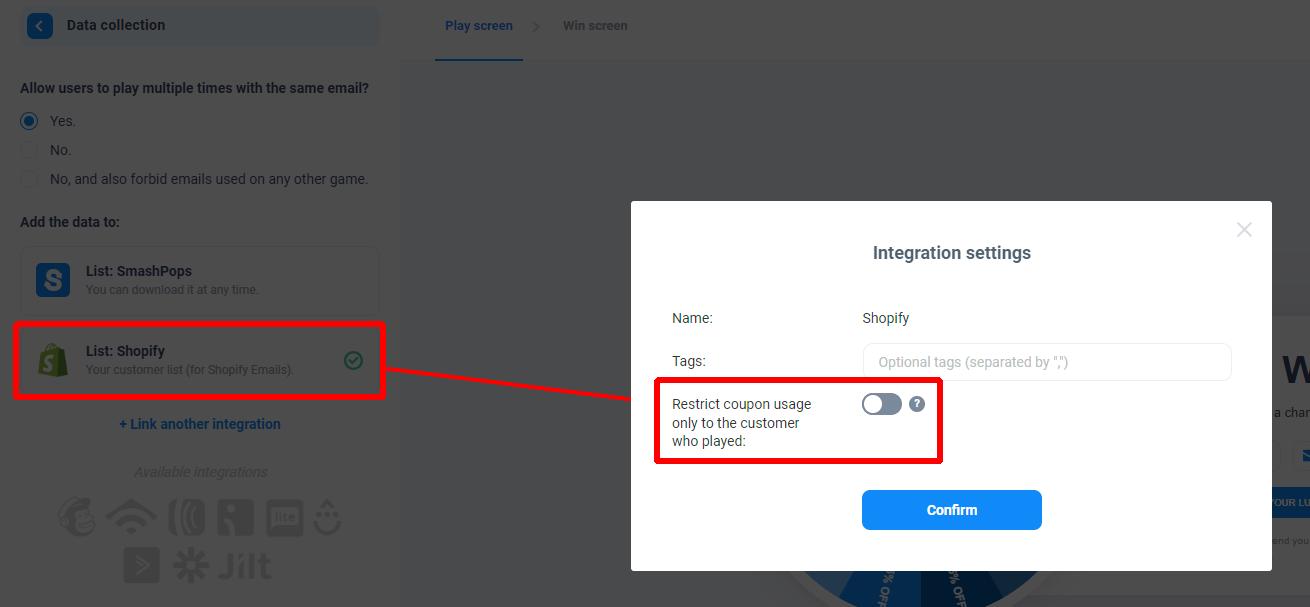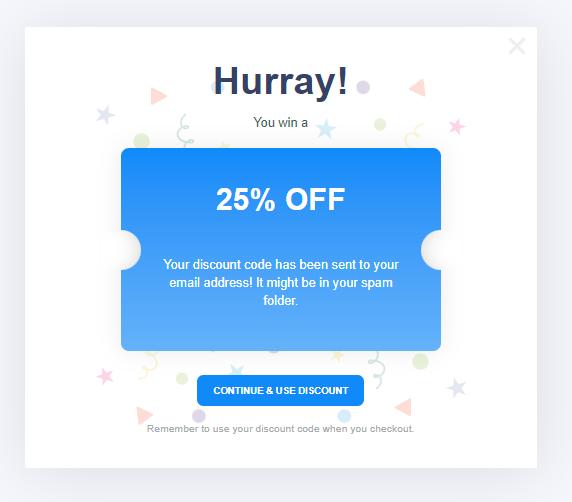In order to avoid collecting bad-quality email addresses as often as possible, we do the following :
- We ban around 34,000 domains that provide disposable email addresses.
- We always check for a valid MX DNS record for the domain of the provided email.
- We prevent people from submitting email addresses too often (to avoid spammers / bots).
- We take the “plus” and “dot” tricks into account when determining whether an address is the same or not.
While we try our best, verifying email deliverability is a non-trivial task that some companies actually dedicate themselves to (DeBounce, CaptainVerify …). We may integrate those companies services in our product at some point (however, their pricing of around $199 for 100k validations is higher than ours and would unfortunately come on top of it), but in the meantime, here are things that you can do to improve the quality of the emails that you collect :
1. Restrict the coupon code usage only to the provided email address.
2. Send the coupon code vie email.
3. Show reasonable prizes.
1. Restrict the coupon code usage only to the provided email address.
This only works if you have a Shopify store.
If you go to “Settings > Data collection” and click on your “Shopify” integration, you’ll see a “Restrict coupon usage only to the customer who played” toggle.

If the toggle is switched on, then the coupon code will only be usable in an order made with the email address used to play in the popup.
So for instance, if your customer enters “[email protected]” to spin the wheel and gets a coupon code, he will only be able to use it if he makes an order with [email protected].
As you can see on the screenshot below, if I try to make an order with a different email address than [email protected], I get a “… discount isn’t available to you” message.

Warning : this can be hard to understand for your customers, so it’s a good idea to explain this behavior in the popup’s text.

2. Send the coupon code via email.
In this case, the player will not see the coupon code on the win screen. Instead, it will show a “Your discount code has been sent to your email address” message.

This gives a very strong incentive to enter a legit email address that the person has access to.
To do this, you’ll need to have your own email provider (like MailChimp, Klaviyo, Omnisend …) and set up a workflow to send the email. Everything is explained in this tutorial.
3. Show reasonable prizes.
With experience, we noticed that most of the “spam” behaviors happen when there is a very attractive prize with a lot of money at stake.
Of course, you want to present attractive prizes to encourage people to share their email address, but promising a “free iPhone 13” will attract opportunists looking to exploit weaknesses in the system to get the big prize. By advertising more reasonable rewards, you reduce the incentive for fraud and malicious activity.
We could go even further : it could be a good strategy to give your customer the best advertised prize. Indeed, if your customer didn’t get the best advertised prize, it pushes him to try again, possibly using a lower-quality email address (not his main one or even a made-up one). However, if your customer did get the best advertised prize on his first try, it doesn’t push him to give an additional email address (possibly of lower quality than the first one).